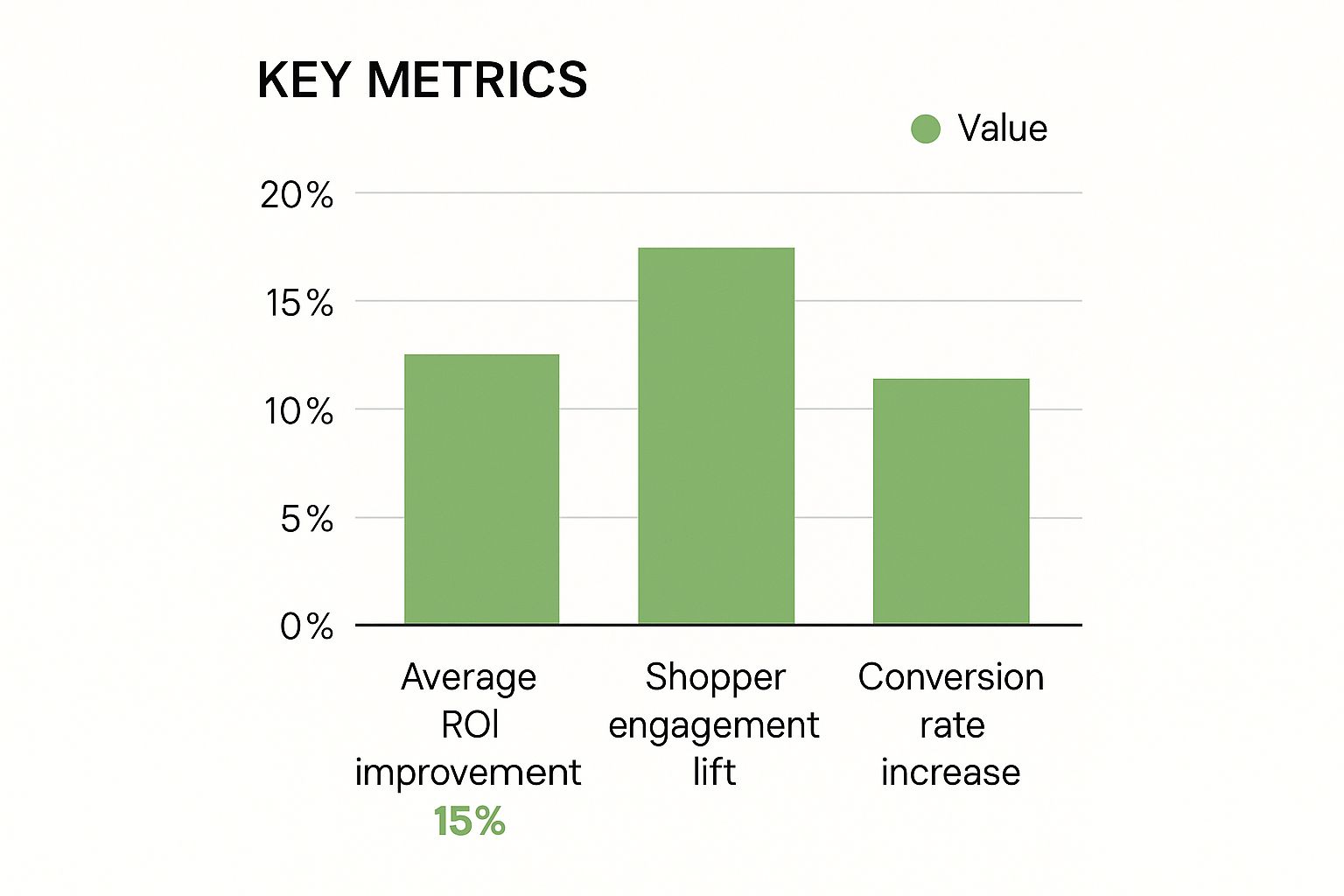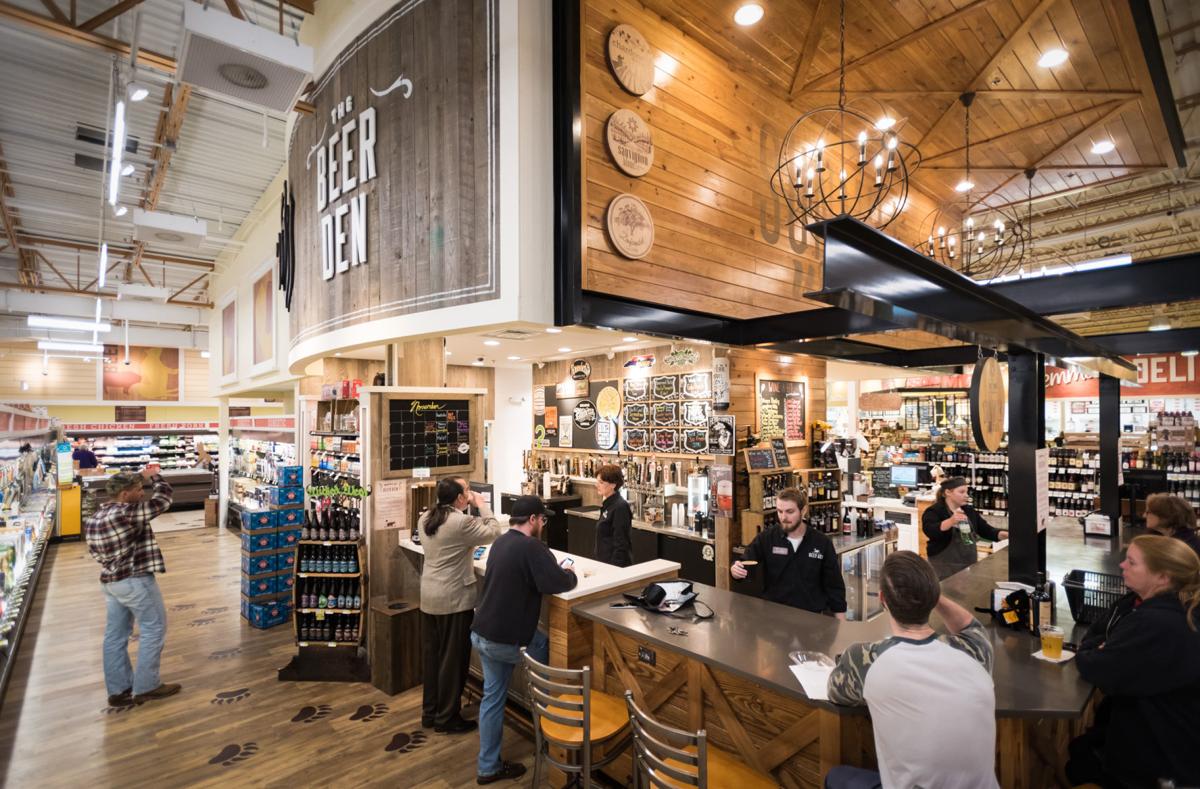What Is Shopper Marketing: Beyond Traditional Approaches

Shopper marketing goes beyond simple in-store promotions. It’s a strategic approach to understanding and influencing consumer behavior along the entire path to purchase. It focuses on the “shopping mode” mindset, that key moment when a consumer actively considers a purchase.
This means understanding not only what they buy, but why, when, and how. This knowledge empowers brands to create targeted campaigns that resonate with shoppers at the precise moment they’re most receptive. This differs greatly from traditional marketing, which often uses a broader approach without considering the shopping experience’s specific context.
Understanding the Shopper’s Mindset
Traditional marketing emphasizes building brand awareness and long-term loyalty. While these remain important goals, shopper marketing recognizes that immediate needs and in-the-moment factors often influence buying decisions.
For instance, a shopper might be influenced by an appealing display, a limited-time offer, or even a product’s placement on the shelf. Shopper marketing leverages these small moments to drive immediate sales. By creating positive shopping experiences, brands can also cultivate loyalty and encourage repeat purchases.
The Evolving Landscape of Shopper Marketing
Shopper marketing constantly adapts to changing consumer behavior and technological advancements. It has evolved beyond simple in-store tactics to embrace a multi-channel strategy. This includes everything from digital advertising and social media engagement to personalized email campaigns and mobile promotions.
This omnichannel strategy ensures brands connect with shoppers wherever they are, whether online, in-store, or somewhere in between. Shopper marketing is also becoming increasingly data-driven.
Brands use data analytics to gain a deeper understanding of shopper behavior, preferences, and purchase patterns. This data enables highly targeted campaigns that deliver the right message to the right shopper at the right time. This data-driven approach also helps brands measure their shopper marketing efforts’ effectiveness and make needed adjustments. This focus on data and measurement is essential for maximizing ROI.
Furthermore, shopper marketing is vital to retail advertising, with significant investment in digital ads. Advertisers are projected to spend over $62 billion on retail media in 2025, a year-over-year increase of more than $10 billion. The average conversion rate for retail leads stays relatively low, around 3%. Find more detailed statistics here. This signifies substantial opportunities to optimize strategies for turning leads into sales. Understanding shopper marketing allows brands to reach consumers effectively in this competitive market.
Building Shopper Marketing Strategies That Actually Work
Effective shopper marketing goes beyond simple promotions. It requires a deep understanding of the shopper’s journey and a strategic approach to influencing purchase decisions. Leading brands are ditching basic in-store activations for data-driven strategies that create personalized experiences. This new focus pinpoints the critical moments of influence where brands truly connect with shoppers.
The Power of Customer Journey Mapping
Understanding the customer journey is crucial for successful shopper marketing. This means mapping every step a customer takes, from initial awareness to the final purchase. By identifying key touchpoints and potential pain points, brands can create more effective interventions.
For instance, a customer might research a product online before visiting a store. Recognizing this, a brand can ensure consistent messaging across both digital and physical channels. This provides a unified brand experience for the shopper, no matter where they interact.
Personalization: The Key to Engagement
Data-driven personalization is changing the retail experience. By using customer data, brands can tailor messaging and offers to individual shoppers, creating more relevant and engaging experiences. Imagine receiving a coupon for a product you regularly buy or seeing personalized recommendations based on your browsing history. This targeted approach feels natural to the shopper and boosts the likelihood of conversion.
To further illustrate the importance of personalized shopper marketing, let’s examine the key components that drive success:
To provide a more structured overview, let’s delve into the components of effective shopper marketing through the following table:
Components of Successful Shopper Marketing
This table outlines the essential elements of effective shopper marketing strategies and their respective impacts on consumer behavior and sales outcomes.
| Strategy Component | Primary Function | Impact on Shopper Behavior | Implementation Complexity |
|---|---|---|---|
| Customer Journey Mapping | Understands shopper touchpoints | Enables targeted interventions | Moderate |
| Personalization | Tailors messaging and offers | Increases engagement and conversion | Moderate to High |
| Channel Integration | Creates a cohesive brand experience | Reinforces messaging across touchpoints | High |
| Technology Integration | Enables data-driven insights and targeted execution | Improves efficiency and ROI | Moderate to High |
The table above highlights the interconnected nature of successful shopper marketing. Each component plays a crucial role, and their combined effect significantly amplifies the impact on shopper behavior and ultimately drives sales.
Seamless Integration Across Channels
Successful shopper marketing demands seamless integration across all touchpoints. In-store activations, digital marketing efforts, and social media engagement should work together. This creates a cohesive brand experience and reinforces the message at every stage of the customer journey.
Technology’s Role in Shopper Marketing
Technology is essential for effective shopper marketing. Some technologies create more buzz than real impact, but others, like mobile marketing, offer genuine ROI. Mobile marketing, for example, can deliver targeted promotions and personalized content directly to smartphones. In-store analytics can track shopper behavior and offer insights into product placement and store layout.
Choosing the right technologies and integrating them strategically is the key to success. Basing decisions on data-driven insights, rather than trends, ensures maximum effectiveness and a measurable impact on the bottom line. This data-focused and strategically integrated approach to shopper marketing transforms the shopping experience from a generic interaction into a personalized journey.
Digital Revolution: Transforming The Shopper Experience

The retail world has dramatically changed. The lines between online and offline shopping are blurred for today’s consumer. Yet, many marketing teams still work separately, missing opportunities presented by this integrated shopping experience. This means shopper marketing must adapt to bridge this gap and connect with consumers wherever they are.
To build effective shopper marketing strategies, actively promoting and developing your brand is essential. One way to boost brand visibility is through custom to-go containers.
Bridging The Gap Between Online And Offline
Innovative brands use technology to connect online and offline experiences. They utilize augmented reality (AR) and virtual reality (VR) to craft immersive in-store experiences, changing how shoppers interact with products.
For example, a furniture store could use AR to let customers visualize furniture in their homes before buying. This allows for a more personalized and engaging experience, helping customers make informed decisions.
Mobile integration is also key. Brands use mobile apps to offer personalized promotions, loyalty programs, and location-based services. This makes shopping more convenient and engaging.
This integration connects brands with shoppers throughout their journey, offering relevant information and deals at the perfect time. It creates a more seamless and personalized experience, fostering stronger customer relationships.
Emerging Technologies: Separating Hype From Reality
Not every new technology offers substantial value in shopper marketing. While some generate buzz, others provide real return on investment (ROI). Interactive displays, for example, can deliver engaging product information and personalized recommendations, directly impacting purchase decisions.
Some expensive technologies, however, may offer less impact. It’s important to thoroughly test new approaches, using data and analytics to measure their effectiveness. This data-driven strategy helps brands determine which technologies truly connect with their target audience and avoid spending on short-lived trends.
Leveraging Digital Touchpoints For Engagement
E-commerce has significantly changed shopper marketing. The global e-commerce market is expected to surpass $6.9 trillion in 2024. This highlights consumers’ growing reliance on digital platforms for product research and purchases. Learn more about e-commerce growth.
Seventy-five percent of shoppers begin their buying journey with a Google search, emphasizing the importance of online visibility in shopper marketing. This means optimizing websites, content, and search engine optimization (SEO) strategies to reach target shoppers effectively.
Word-of-mouth also influences buying decisions, making social proof a powerful tool. Shopper marketing needs to focus on integrating physical and digital touchpoints into a seamless brand experience. This integrated approach lets brands reach shoppers at every stage, maximizing engagement and influencing purchasing decisions.
Influence That Converts: Partnerships That Drive Sales
Shopper marketing aims to transform shoppers into buyers. One powerful method involves influencer collaborations, especially those that genuinely resonate with the target audience. This strategy goes beyond simply partnering with influencers boasting large follower counts. Instead, it focuses on finding influencers who authentically connect with your ideal shopper, fostering trust and encouraging purchase decisions.
Identifying the Right Influencers
Selecting the right influencers is vital for successful shopper marketing. It’s not solely about follower numbers; relevance plays a key role. An influencer with a smaller, highly engaged audience that aligns perfectly with your brand values and target shopper demographics can be significantly more effective than a mega-influencer with a broad, less invested following. This focused approach ensures the message reaches the right consumers, maximizing impact and boosting sales.
Creating Authentic Content
After identifying the right influencers, the next step involves creating authentic content that seamlessly guides consumers from awareness to purchase. The key is to ensure the content feels organic and genuine, not forced or overly promotional. This authenticity builds trust and credibility with the audience, increasing the likelihood of engagement and conversion. For example, an influencer could incorporate a product naturally into their daily routine, showcasing its benefits in a relatable manner.
Building Long-Term Relationships
While one-off influencer posts can generate buzz, building long-term relationships can transform influencers into valuable shopper marketing assets. These ongoing partnerships create deeper connections with the target audience and provide opportunities for sustained engagement. This consistent presence builds brand familiarity and strengthens the influencer’s credibility with their followers, ultimately driving more significant, long-term results.
Influencer marketing is a major force in shopper marketing, especially for building authentic connections with target audiences. Reflecting the success of influencer partnerships in driving engagement and conversions, the global influencer marketing market has grown substantially. It’s projected to reach $33 billion in 2025. In the U.S., influencer marketing spending has surpassed social ad spending growth, increasing by 16% year-over-year to exceed $8.14 billion in 2024. This continuous growth underscores the importance of incorporating influencers into shopper marketing strategies to increase brand visibility and customer interaction. Explore this topic further.
Measuring ROI and Attributing Sales Impact
Measuring the effectiveness of influencer partnerships is essential. This requires a clear framework for attributing sales impact and demonstrating return on investment (ROI). While follower counts and engagement metrics offer some insights, tracking actual conversions and sales attributed to influencer activity is crucial. This data-driven approach allows brands to understand which partnerships are truly driving results and optimize their shopper marketing strategies accordingly. This also involves considering potential pitfalls, like misaligned brand values or inauthentic content, and learning from successful case studies to refine strategies.
Measuring What Matters: Beyond Surface-Level Metrics

The infographic above illustrates the power of effective shopper marketing. Across three key metrics—Average ROI improvement, shopper engagement lift, and conversion rate increase—the impact is clear. Shopper marketing initiatives can deliver a 15% average ROI improvement, a 20% shopper engagement lift, and a 10% conversion rate increase.
These impressive numbers showcase the potential of shopper marketing to boost both engagement and profitability. But achieving these results requires a strategic approach to measurement, one that goes beyond vanity metrics and focuses on real business outcomes.
KPIs That Indicate True Success
Success in shopper marketing hinges on measuring the right things. Often, brands focus on superficial metrics that don’t truly reflect purchasing behavior. Sales impact is the ultimate measure of success. This means understanding how campaigns influence decisions at each stage of the buyer journey.
Identifying key performance indicators (KPIs) aligned with your business goals is essential. These KPIs will reveal which strategies are driving actual results and which ones need tweaking. For example, website traffic is helpful, but conversion rates truly demonstrate how many visitors become paying customers. Metrics like average order value and customer lifetime value (CLV) offer even deeper insights into long-term profitability.
To truly understand your shopper marketing effectiveness, you need a structured framework to track and analyze key metrics. The following table outlines a sample framework you can adapt to your specific needs.
Shopper Marketing Metrics Framework
This table presents essential metrics for evaluating shopper marketing effectiveness across different stages of the customer journey, helping marketers identify the most valuable data points for their specific goals.
| Metric Category | Key Metrics | What It Measures | Collection Method | Strategic Value |
|---|---|---|---|---|
| Awareness | Brand Mentions, Social Media Reach | Brand visibility and reach within target markets. | Social Listening, Web Analytics | Gauges campaign reach and potential impact. |
| Engagement | Click-Through Rates, Dwell Time, Social Media Interactions | Level of interaction with marketing materials. | Web Analytics, Social Media Analytics | Assesses campaign effectiveness in capturing shopper attention. |
| Conversion | Conversion Rates, Sales Lift, Average Order Value | Effectiveness in driving purchases and revenue. | Sales Data, E-commerce Tracking | Measures the direct impact of campaigns on sales performance. |
| Loyalty | Customer Retention Rate, Repeat Purchase Rate, Customer Lifetime Value (CLV) | Long-term customer relationships and profitability. | CRM Data, Loyalty Program Data | Evaluates the sustained impact of shopper marketing efforts. |
This framework helps organize your data collection and analysis, allowing you to gain a comprehensive view of your shopper marketing performance. By tracking these metrics, you can identify areas for improvement and optimize your strategies for maximum impact.
Attribution Modeling in a Complex Landscape
Today’s customer journey is complex. Shoppers interact with brands across multiple touchpoints—from social media and online research to in-store experiences. Attribution modeling helps determine the contribution of each touchpoint to the final purchase. This understanding is crucial for resource allocation and campaign optimization. Different models, like first-click, last-click, or multi-touch attribution, provide varying perspectives on the customer journey.
Building Effective Testing Frameworks
Continuous optimization is key to shopper marketing success. This means creating testing frameworks to experiment with new approaches and gather data without disrupting the shopping experience. A/B testing, for example, lets brands compare different versions of marketing materials or offers to see what resonates best with shoppers. This iterative process ensures continuous improvement and maximizes ROI.
Working Within the Limitations of Current Measurement Tools
While data is crucial, no measurement system is perfect. Current tools have limitations. Acknowledging these limitations and using available data creatively is still essential for good decision-making. Combining qualitative data, such as customer feedback, with quantitative metrics provides a richer understanding of shopper behavior. This combined approach empowers brands to refine strategies and optimize campaigns, ultimately driving meaningful results.
The Future of Shopper Marketing: Staying Ahead of Change
The retail landscape is constantly evolving, shaped by shifting consumer behaviors and new technologies. Shopper marketing needs to adapt to these changes to stay effective. This means anticipating future trends and getting ready for the next wave of retail innovation.
AI and Machine Learning: Personalization and Responsibility
Artificial Intelligence (AI) and Machine Learning are opening up exciting new possibilities for personalization in shopper marketing. Machine Learning can analyze huge amounts of data to understand individual shopper preferences and predict their future behavior. This lets brands deliver highly targeted messages and offers, leading to more relevant and engaging experiences.
However, using these powerful tools responsibly is crucial. Brands need to be transparent about how they collect and use shopper data, making sure they respect privacy concerns. This ethical approach builds trust with consumers and encourages long-term loyalty.
The Rise of the Conscious Consumer: Sustainability as a Purchase Driver
Today’s consumers are increasingly aware of the environmental and social impact of their purchases. Sustainability isn’t just a bonus anymore; it’s a major factor in many shoppers’ decisions. This means brands need to genuinely incorporate sustainable practices into their shopper marketing strategies.
This might involve highlighting eco-friendly products, promoting responsible sourcing, or reducing packaging waste. Brands can also team up with influencers who share these values to connect with a larger audience.
Emerging Technologies: Predictive Shopping and Immersive Experiences
The retail world is constantly seeing new technologies emerge. Some are revolutionary, while others fade quickly. Predictive shopping assistants, for example, use AI to anticipate shopper needs and provide personalized recommendations. This creates a more convenient and intuitive shopping experience.
Immersive retail experiences, using technologies like AR and VR, offer engaging and memorable interactions. These technologies can transport shoppers to virtual worlds, letting them explore products in exciting new ways.
To understand the impact of future shopper marketing initiatives, check out resources on measuring campaign success. Analyzing emerging trends and separating real progress from passing fads allows brands to invest their resources in the most effective technologies.
Building an Innovation Roadmap
Staying ahead of the curve requires a proactive approach to innovation. Brands need to develop an innovation roadmap to guide their shopper marketing efforts. This roadmap should prioritize initiatives that align with their target audience, business goals, and brand values.
It should also include a framework for testing and measuring the effectiveness of new technologies and strategies. This allows brands to adapt quickly to changing market dynamics and stay ahead of the competition. This means continuously evaluating new technologies, testing new approaches, and measuring the results.
By embracing a culture of experimentation and data-driven decision-making, brands can ensure their shopper marketing strategies remain effective in the constantly changing retail landscape.
Ready to transform your shopper marketing strategy and achieve exceptional results? Visit Theory House today to discover how our expertise can help your brand connect with shoppers and achieve your business objectives.




